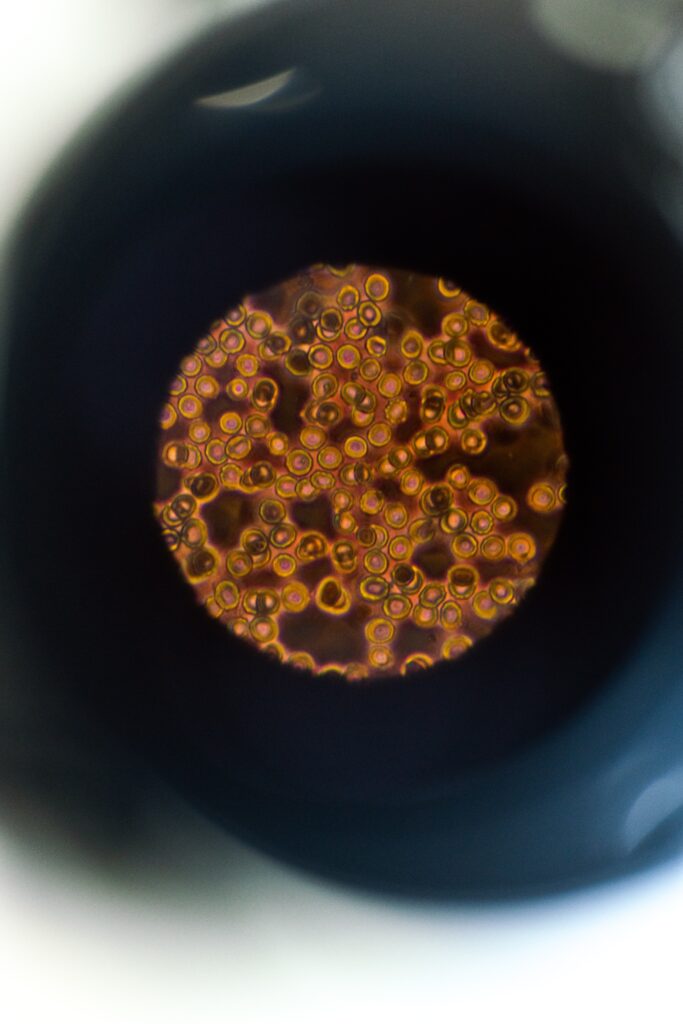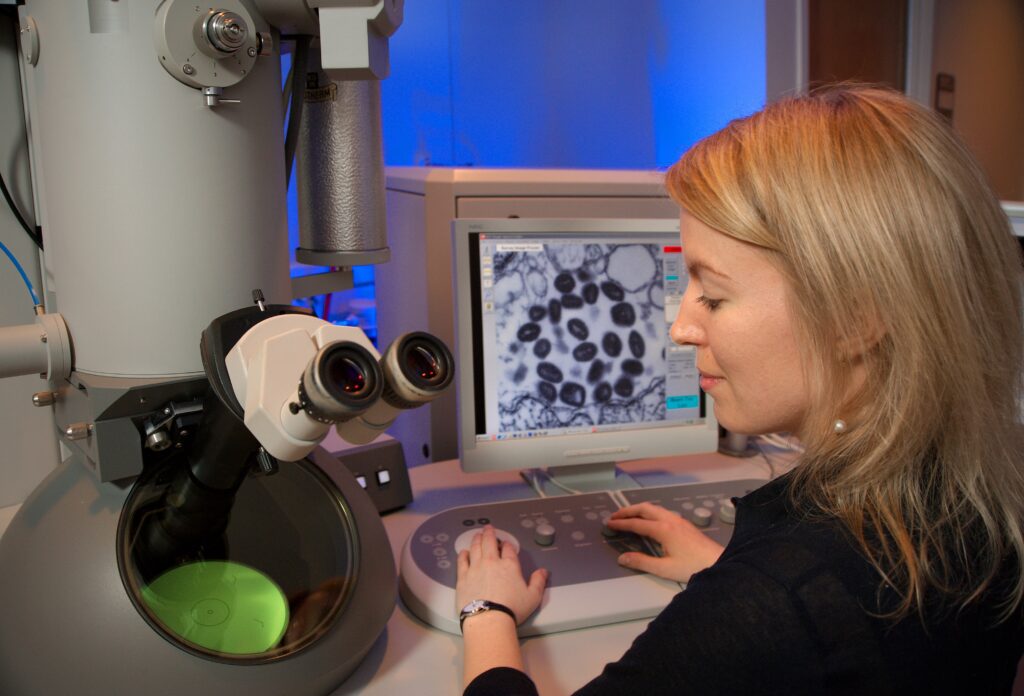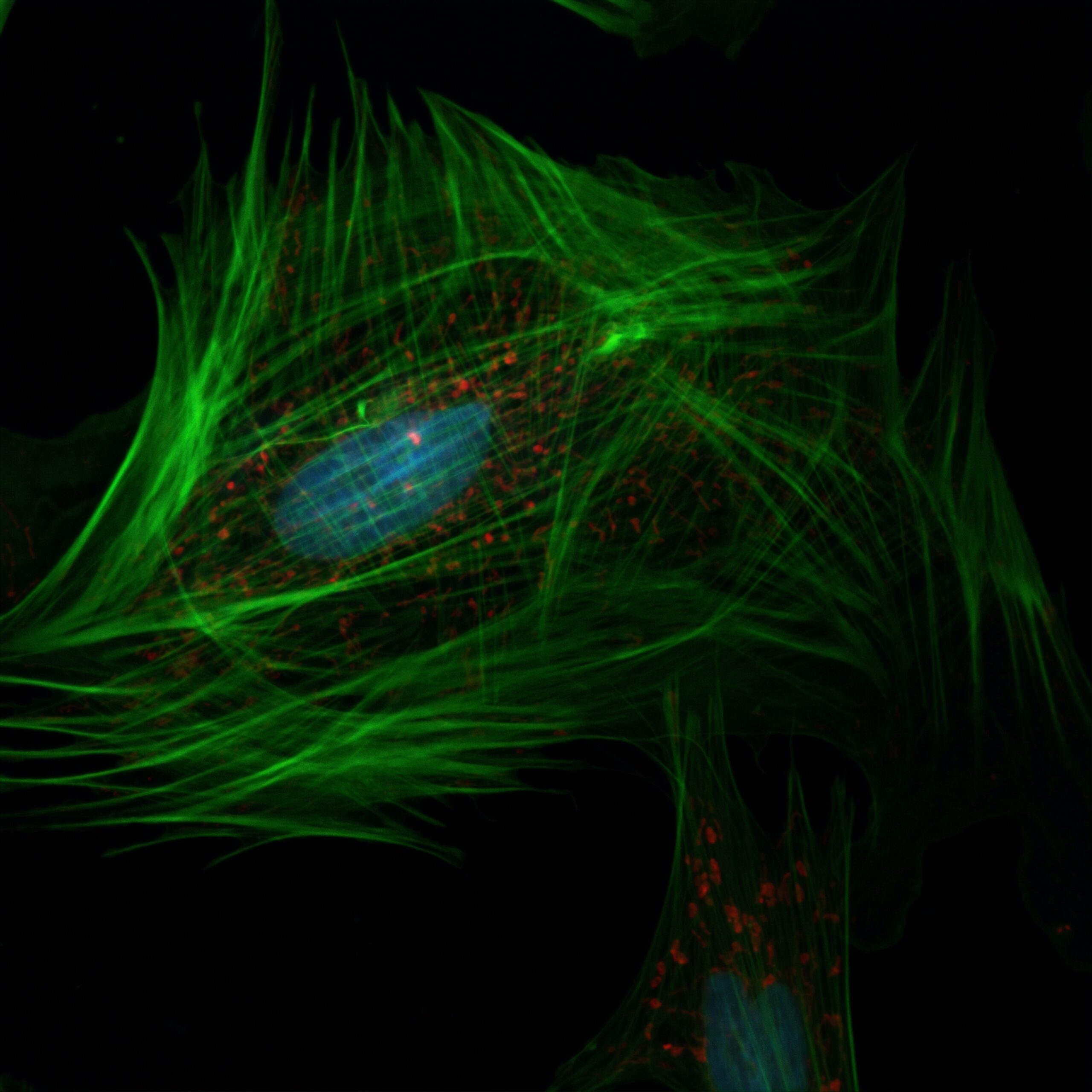
In the world of optics, it’s important to understand the difference between magnification and resolution. While these terms are often used interchangeably, they actually refer to two distinct aspects of optical imaging. Magnification is the ability to enlarge an image or object, making it appear larger than its actual size. On the other hand, resolution refers to the level of detail that can be observed or captured in an image. So, while magnification determines how big something appears, resolution determines how clear and crisp the fine details are. Understanding this difference is crucial when it comes to choosing the right optical instrument for various applications, whether it be microscopes, telescopes, or even cameras.
Understanding Magnification
Definition of Magnification
Magnification refers to the process of enlarging an object or image to make it appear larger than its actual size. In other words, it is the ratio of the size of an image produced by an optical instrument to the size of the object being observed. This can be achieved through the use of lenses or other optical systems that bend or refract light to create a larger image.
How Magnification Works
The concept of magnification is based on the principles of optics. When light passes through a lens, it is refracted or bent, causing the rays to converge or diverge. By adjusting the shape and curvature of the lens, the path of the light can be manipulated, resulting in an enlarged image. The magnification power of an optical system is determined by the focal length of the lens or the combination of lenses used.
Types of Magnification
There are two main types of magnification: visual and optical. Visual magnification refers to the apparent increase in size of an object when viewed with the naked eye. This can be achieved by bringing the object closer to the eyes or using visual aids such as magnifying glasses. On the other hand, optical magnification involves the use of optical instruments such as microscopes, telescopes, or cameras to enhance the size of an image by utilizing lenses or mirrors.
Factors Affecting Magnification
Several factors can affect the magnification power of an optical system. The focal length of the lens is one of the primary factors, as it determines the degree of convergence or divergence of the light rays. The distance between the lens and the object being observed, as well as the distance between the lens and the image plane, also play a role in magnification. Additionally, the design and quality of the lens can impact the clarity and accuracy of the magnified image.
Exploring Resolution
Definition of Resolution
Resolution refers to the ability of an optical system to distinguish fine details or distinguish closely spaced objects. It is a measure of the level of detail that can be captured or observed in an image. In other words, resolution determines the clarity and sharpness of the image, enabling the differentiation of individual elements.
Importance of Resolution
Resolution is a crucial aspect in optical systems as it directly impacts the quality and accuracy of the images produced. Higher resolution enables the visualization of finer details and enhances the level of precision in scientific, medical, and imaging applications. In fields such as microscopy and photography, resolution plays a critical role in capturing and analyzing intricate structures, aiding in research, diagnosis, and documentation.
Types of Resolution
There are two primary types of resolution: spatial resolution and temporal resolution. Spatial resolution refers to the ability to distinguish between two closely located objects or the level of detail captured in an image. It is typically measured in distance units, such as line pairs per millimeter or pixels per inch. Temporal resolution, on the other hand, relates to the ability to capture fast-moving objects or rapidly changing events. It is measured in time units, such as frames per second.
Measuring Resolution
Resolution is commonly measured using different techniques depending on the application and the nature of the optical system. In microscopy, resolution can be quantified using parameters like numerical aperture and the Rayleigh criterion, which defines the minimum distance between two points at which they can still be distinguished. In digital imaging, resolution is often expressed in terms of megapixels, which represent the total number of pixels in an image.

Distinguishing Between Magnification and Resolution
Definitions
While magnification and resolution are related concepts in the field of optics, they refer to different aspects of optical systems. Magnification focuses on the size of the image, enlarging it for easier observation, while resolution concerns the ability to distinguish fine details and capture high-quality, clear images.
Key Characteristics
Magnification primarily impacts the apparent size of an object or image, making it appear larger or closer than it actually is. It does not enhance the level of detail or provide additional information beyond enlarging the image. Resolution, on the other hand, affects the level of detail that can be observed in an image, enabling the differentiation of fine structures and precise analysis.
Applications
Both magnification and resolution have important applications in various fields. Magnification is particularly useful in situations where it is necessary to observe objects or images in a larger format to facilitate analysis, such as in microscopy, astronomy, or photography. Resolution, on the other hand, is critical in applications that require precise detail, such as medical imaging, scientific research, and high-resolution photography.
Relationship between Magnification and Resolution
How Magnification Affects Resolution
While magnification may seem to improve the level of detail in an image, it does not directly enhance resolution. Increasing magnification alone does not increase the inherent resolving power of an optical system. In fact, higher magnification can sometimes lead to a decrease in resolution, as it may amplify optical aberrations or imperfections in the system.
Limitations of Magnification in Enhancing Resolution
There are certain limitations to using magnification as a means to enhance resolution. As mentioned earlier, increasing magnification beyond the system’s capability can result in a loss of resolution. Additionally, the resolution of an image is ultimately limited by the properties of the optical system itself, such as the size of the pixels or the quality of the lenses. Therefore, simply increasing magnification without considering the underlying resolution limits may not yield the desired level of detail.
Trade-Off between Magnification and Resolution
It is important to strike a balance between magnification and resolution when selecting an optical system for a specific application. Increasing magnification may be useful for observing larger objects or obtaining a closer view, but it should not be done at the expense of resolution. Achieving high-quality images with sufficient detail requires careful consideration of the resolution capabilities of the system, along with the desired level of magnification.

Applications in Microscopy
Magnification in Microscopy
Magnification is a fundamental aspect of microscopy, allowing scientists to visualize microscopic objects and structures that are not visible to the naked eye. By using powerful lenses and optical systems, microscopes can magnify tiny samples, revealing intricate details and aiding scientific research, medical diagnostics, and various other applications. Magnification is particularly crucial in fields such as histology, pathology, and cell biology.
Importance of Resolution in Microscopy
Resolution plays a vital role in microscopic imaging as it determines the level of detail that can be observed and analyzed. In microscopy, the ability to distinguish between fine structures, such as cellular organelles or individual molecules, is essential for accurate research, diagnosis, and analysis. Higher resolution helps researchers and scientists capture more precise information and gain a deeper understanding of the microscopic world.
Microscopy Techniques to Enhance Resolution
Over the years, several microscopy techniques have been developed to enhance resolution beyond the inherent limits of optical systems. These techniques include confocal microscopy, super-resolution microscopy, and electron microscopy. Confocal microscopy utilizes laser scanning and pinhole apertures to eliminate out-of-focus light, thereby improving resolution. Super-resolution microscopy techniques, such as structured illumination microscopy and stochastic optical reconstruction microscopy, use advanced algorithms and fluorophores to achieve resolutions below the diffraction limit of light. Electron microscopy, which uses a beam of accelerated electrons instead of light, offers even higher levels of resolution for observing ultrafine details.
Implications in Imaging Technology
Magnification in Photography
Magnification plays a significant role in photography, allowing photographers to capture objects or scenes in larger formats. By adjusting the focal length of lenses or using zoom lenses, photographers can magnify the image and make distant subjects appear closer. Magnification is particularly useful for nature and wildlife photographers, who often need to capture detailed shots of animals or distant landscapes.
Importance of Resolution in Photography
Resolution is crucial in photography as it determines the level of detail, sharpness, and clarity in the captured images. High-resolution photographs enable photographers to reproduce fine textures, capture subtle nuances of color, and maintain sharpness even when enlarging or printing the images. In professional photography, resolution is a key consideration, as it influences the quality and marketability of the photographs.
Enhancing Resolution in Digital Imaging
With the advancement of digital imaging technology, several techniques have been developed to enhance resolution and image quality. Image processing algorithms, such as interpolation and noise reduction, can help improve the sharpness and clarity of digital images. Higher sensor resolutions in digital cameras also contribute to capturing more detailed images. Additionally, technologies like high dynamic range (HDR) imaging and panoramic stitching enable the creation of high-resolution images by combining multiple exposures or images.

Comparison in Optical Systems
Magnification in Telescopes
Magnification plays a vital role in telescopes, enabling astronomers and enthusiasts to observe celestial objects such as stars, planets, and galaxies with greater detail. By using large objective lenses or mirrors, telescopes can gather and focus light, enlarging the image and allowing for close observation of distant astronomical bodies. High magnification is particularly beneficial for studying the fine structures and surface features of planets and the intricate details of distant galaxies.
Resolution in Telescopes
Resolution is of utmost importance in telescopes, as it determines the level of detail that can be observed in astronomical images. Higher resolution enables astronomers to discern finer features, such as craters on the moon, planetary atmospheres, or star clusters. It plays a crucial role in scientific research, aiding in the accurate measurement of object sizes, distances, and properties.
Magnification vs. Resolution in Binoculars
While magnification is often a significant factor in binoculars’ selection, it does not necessarily correspond to higher resolution. Binoculars with higher magnification may provide a closer view of distant objects but may not necessarily offer better clarity or detail. Resolution in binoculars depends on factors such as lens quality, objective size, and optical design. Therefore, it is essential to consider both magnification and resolution when choosing binoculars for specific applications, such as birdwatching, stargazing, or sporting events.
Advancements in Medical Imaging
Magnification in Medical Imaging
Magnification plays a critical role in medical imaging, enabling healthcare professionals to visualize detailed anatomical structures or pathological conditions for accurate diagnosis and treatment. Techniques such as X-rays, ultrasound, and computed tomography (CT) scans utilize magnification to capture high-quality images of internal body parts, aiding in the detection and evaluation of diseases, injuries, and abnormalities.
Enhancing Resolution in Medical Imaging
Resolution improvement is a crucial aspect of medical imaging as it allows for the identification of subtle abnormalities, accurate measurements, and precise localization of structures. Advancements in imaging technology, such as higher-resolution sensors, digital image processing algorithms, and the use of contrast agents, have contributed to enhancing resolution in medical imaging. Techniques like magnetic resonance imaging (MRI) and positron emission tomography (PET) offer exceptional resolution and image quality in various clinical applications.
Clinical Importance of Resolution
Resolution is particularly significant in medical imaging when it comes to detecting small lesions, evaluating tissue boundaries, or assessing the response to treatment. High-resolution images aid healthcare professionals in making accurate diagnoses, selecting appropriate treatment plans, and monitoring the progress of patients. It enables them to identify even the smallest abnormalities or changes, contributing to better patient care and outcomes.
Considerations in Display Technology
Magnification in Screen Zooming
Magnification is a commonly used feature in display technology to assist individuals with visual impairments or those who require a closer view of the content. Screen zooming allows users to enlarge the displayed content, making it more readable and accessible. It is beneficial for individuals with low vision or conditions such as presbyopia. By magnifying the content on the screen, it improves visibility and enhances user experience.
Resolution Requirements for Different Displays
Different types of displays have varying resolution requirements depending on their size, intended use, and the content being displayed. Higher resolution is often desirable for displays used in graphic design, video editing, or gaming, as it ensures sharper images and more accurate representation of colors and details. For everyday use, such as web browsing or document viewing, a lower resolution may be sufficient. The resolution requirements should align with the display size to ensure an optimal viewing experience.
Enhancing Resolution in Virtual Reality (VR)
Resolution is a crucial factor in virtual reality (VR) technology as it directly impacts the immersive experience. Higher resolution in VR headsets increases the level of detail and reduces the pixelation effect, enabling users to perceive a more realistic and immersive virtual environment. Advancements in display technology, such as higher pixel densities, faster refresh rates, and improved image processing, have contributed to enhancing resolution and overall VR experience.
Conclusion
Summary of Differences
In summary, magnification and resolution are distinct but interconnected concepts in the realm of optics. Magnification focuses on enlarging an image or object to make it appear larger, while resolution relates to the level of detail and clarity that can be observed or captured. While magnification can contribute to the visualization of larger or closer objects, resolution is critical for discerning fine structures and capturing precise information.
Importance of Balancing Magnification and Resolution
Balancing magnification and resolution is crucial to achieve high-quality images and accurate observations in various optical systems. Consideration should be given to the inherent resolution capabilities of the system along with the desired level of magnification. By understanding the interplay between magnification and resolution, researchers, healthcare professionals, photographers, and enthusiasts can make informed decisions when selecting optical systems, ensuring optimal results in their respective fields.








